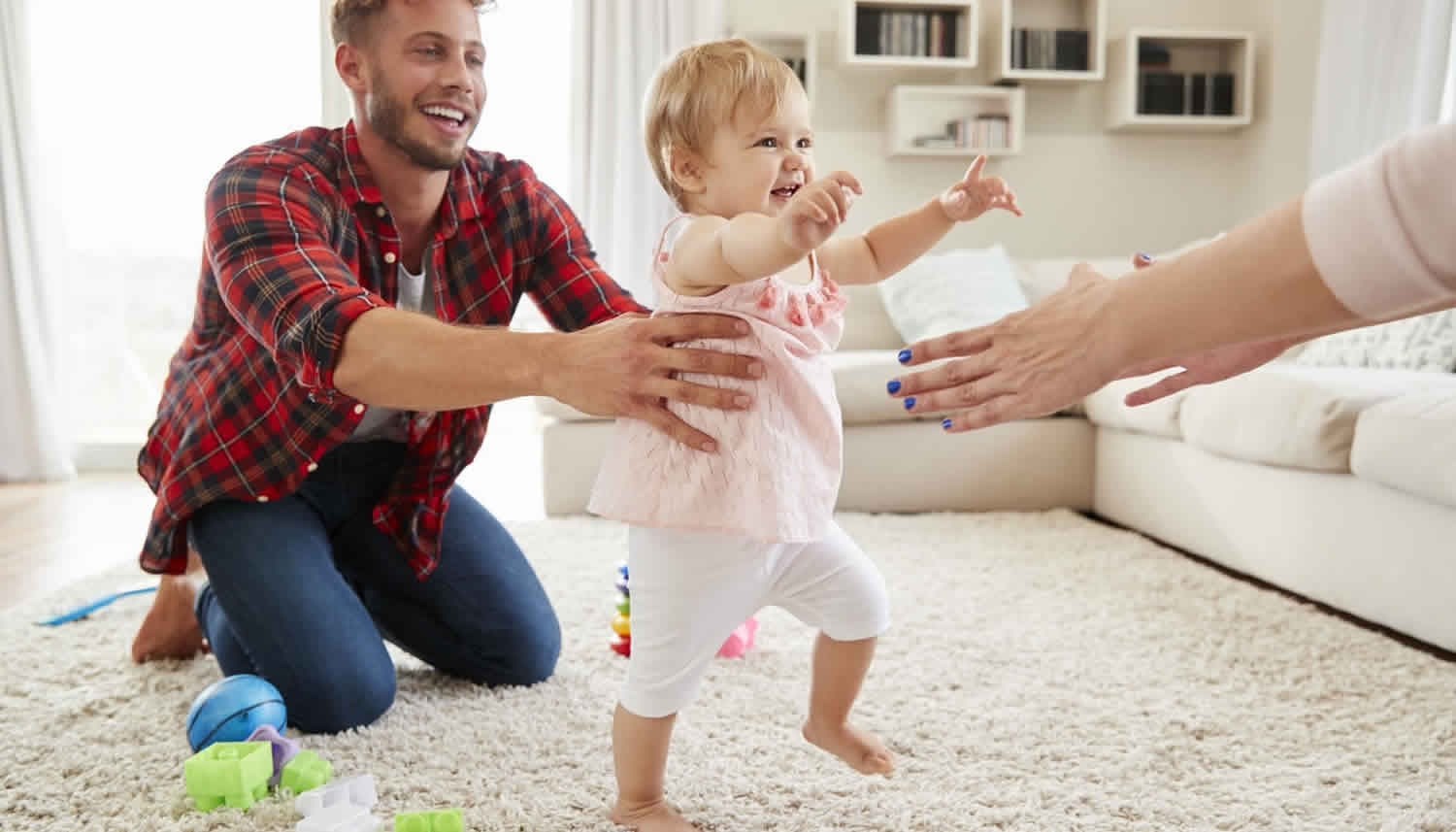When do babies start walking?
Babies usually start walking sometime between 8 and 18 months old. Before walking, babies will usually have been crawling (between 6 and 13 months) and pulling themselves up to stand (usually between ages 9 and 12 months).
All babies develop according to the same sequence of events. For example, all babies learn to sit before they learn to walk. However, some children reach developmental milestones such as sitting and walking early, and others later.
Babies generally develop from the top down. The first thing to develop is head control and strengthening of the neck muscles. Later, hand coordination develops, which allows a baby to pull themselves forward before learning how to crawl. Once a baby has better control of their lower body, they can use their hands and knees to crawl. All of this happens in preparation for learning to walk.
A baby develops as their central nervous system matures. Along the way, many of the primitive reflexes they had as a baby, such as the grasp and walking reflexes, are lost. These primitive reflexes need to disappear in order for a baby to learn to move themselves voluntarily. The walking reflex, for example, disappears by the end of the first month of life. The grasp reflex starts to disappear at two to three months of age. Also, while a young baby wildly moves their arms and legs in every direction, an older baby learns to make specific responses.
If your baby is 18 months or older and isn’t walking on their own yet, or if you’re concerned about any areas of your baby’s development, contact your doctor or child and family health nurse for advice.
How walking develops
To walk, your baby needs to have many skills, including balance, coordination, standing up and being able to support their body weight from one leg to the other.
Each new skill your baby develops builds on the previous skills your baby has learnt.
As your baby gets older, the skills they learn get more and more complex.
While your baby was busy crawling and pulling up to stand, then cruising between pieces of furniture, they were building valuable muscle strength and skills like balance and coordination, which are all needed for walking and, later, running.
Other areas of development
While walking is an exciting milestone, it’s important to remember that there’s a lot happening for your baby around this time. Your baby is also developing new communication and thinking skills (for example, first words) and learning to handle new emotions such as coping with separating from you and dealing with strangers. And once your baby is up and walking, they have a whole new view of their world and the people in it to take in and try to make sense of.
What you can do
Here are some things you can do to help your baby with walking include:
- Play together — being with or near your child when they explore helps them feel safe and builds their confidence.
- Encourage moving — being active and moving around builds your child’s muscle strength and posture, which helps your child get better at walking and prepares them for running.
- Make your home safe — as your baby starts to move around the house more, keeping the area around them clear ensures there are no accidents and creates lots of opportunities to walk and explore.
- Avoid baby walkers — these do not help your baby learn to walk and can actually delay development of walking skills. They also cause thousands of injuries every year in the US.
Children in baby walkers can:
- Roll down the stairs—which often causes broken bones and severe head injuries. This is how most children get hurt in baby walkers.
- Get burned—a child can reach higher in a walker. It is now easier for a child to pull a tablecloth off a table and spill hot coffee, grab pot handles off the stove, and reach radiators, fireplaces, or space heaters.
- Drown—a child can fall into a pool or bathtub while in a walker.
- Be poisoned—reaching high objects is easier in a walker.
Most walker injuries happen while adults are watching. Parents or caregivers simply cannot respond quickly enough. A child in a walker can move more than 3 feet in 1 second! That is why walkers are never safe to use, even with an adult close by.





